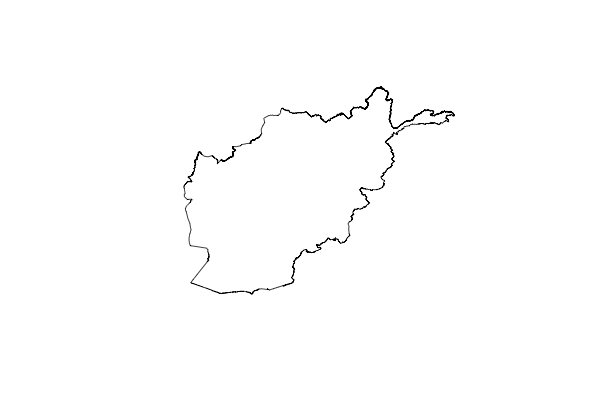Database adventures
Tags:
#Afghanistan
#database
#PostGIS
#R
#SQL
Recently I’ve set up both a PostgreSQL and MySQL server to host databases related to some of our projects in the Ward Lab. I should note that I have no idea what I’m doing, and this is the first time I’ve dealt with databases and how to get them working. It’s been a very humbling experience, although in the end, we now have two different databases that can be accessed remotely from a laptop through R or other tools like Quantum GIS:
# setup connection to database
library(rgdal)
dsn <- "PG: dbname='db' host='someIP' port='5432' user='me' password='guest'"
# Load Afghanistan boundary (source: GADM)
state <- readOGR(dsn, layer="afg_adm0")
plot(state)
It all started in the beginning of this summer, when we needed a spatial database to support several GB worth of data related to a forecasting project with, surprise, a heavy spatial component. PostgreSQL, an open source database system, in conjunction with the PostGIS extension, provides a database that can store that amount of data, supports spatial data types like polygon and raster data, and provides a useful number of related functions. With it you can do things like finding intersections between roads (lines), subsetting a gigantic raster dataset covering the entire Earth to just one country, and more.
Long story short, without any background knowledge, getting everything working was a really long and frustrating process that lasted several weeks. With the benefit of hindsight, I’ve written up some documentation on our Lab wiki on how to setup a PostGIS server on a Mac and configure it for remote access, as well as how to get started guide for users. Obviously that is all written with our projects in mind, and pretty rough still, but maybe it’s helpful if you’re doing this for the first time like I did.
One final comment: yesterday I went through a similar process to set up a MySQL database with remote access through R. It took about 2 hours from start to finish, much of which was spent on adding data. Some of that difference in time is hopefully because I’m a little bit more familiar with databases now, but MySQL does seem to be a bit easier to get going than PostgreSQL.
